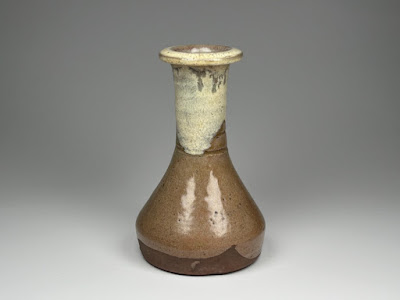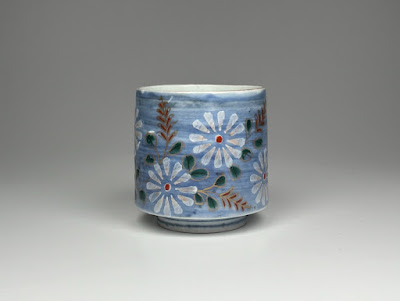酒津焼の花立 Sakazu Earthenware Flower Vase

Height: 14.8 cm / Width: 9.7 cm 神奈川県大和市で月1回やっている やまと古民具骨董市 で手に入れた。店の主人によれば、岡山県倉敷市の酒津(さかづ)地区で、おおむね100年くらい前に焼かれたものという。ここ2年くらい、わたしは東北のやきものに興味をもって多少あつめてもいるが、当然のことだが、やきものの技術や意匠は突然変異的に発生するものではないから、西日本にも(もっと言えば朝鮮や中国にも)おなじような毛色のやきものを生産した窯が存在しており、この花立にもそういうシンパシーを感じた。赤褐色の土を三角フラスコみたいな形につくり、黄土色と白色の釉をかけている。首の真ん中あたりの2本の筋目が全体を引き締めている。いわゆる仏花器、もしくは神前に供える榊立(さかきたて)で、酒津では相当量産したものらしい。 I obtained this earthenware at a flea market held once a month in Yamato City, Kanagawa. An antique dealer said it was baked in the Sakazu district, Kurashiki City, Okayama, about 100 years ago. I have been interested in old Tohoku earthenwares in the last two years, and acquired some. As the art of pottery does not suddenly emerge, there can be some similarities between Tohoku and other western Japanese (and also Chinese and Korean) ceramic wares. I felt a flavor of Tohoku potteries in this yellowish brown and white glazes over a red-brown body like a flask. Two lines engraved at the middle makes it better. This

